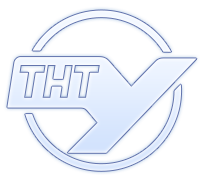|
|
|
Technologies for designing and programming big data in e-learning
| Назва | Technologies for designing and programming big data in e-learning |
| Назва англійською | Technologies for designing and programming big data in e-learning |
| Автори | Roman Khrabatyn, Viktoriia Bandura, Natalia Shkolna, Yuri Khrabatyn |
| Принадлежність | Ivano-Frankivsk National Technical University of Oil and Gas, Ivano-Frankivsk, Ukraine |
| Бібліографічний опис | Technologies for designing and programming big data in e-learning / Roman Khrabatyn, Viktoriia Bandura, Natalia Shkolna, Yuri Khrabatyn // Scientific Journal of TNTU. — Tern.: TNTU, 2023. — Vol 109. — No 1. — P. 72–79. |
| Bibliographic description: | Khrabatyn R., Bandura V., Shkolna N., Khrabatyn Yu. (2023) Technologies for designing and programming big data in e-learning. Scientific Journal of TNTU (Tern.), vol 109, no 1, pp. 72–79. |
| УДК |
004 |
| Ключові слова |
e-learning, big data, big data analysis, data personalization, big data management, MapReduce, Hadoop, NoSQL, data mining in e-learning. |
|
Recently, e-education around the world is developing rapidly and the main problem is the timely provision of students with quality educational information. A significant impetus for this is the global epidemic of covid-19. The problem of implementing e-education cannot be solved without analysing the large flow of information coming into the information environment of e-education from participants in the educational process – students, teachers, administration, etc. In this environment, there are a large number of different types of data, both structured and unstructured, which are difficult to process by traditional statistical methods. The aim of the study is to show that the development and implementation of successful e-learning systems requires the use of new technologies that would allow the storage and processing of large data streams. Large amounts of disk space are required to store large data. It is shown that to solve this problem it is expedient to use cluster technology NAS (Network Area Storage), which allows to store information of educational institutions on NAS - servers and to have access to them from the Internet. To process and personalize Big Data in the e-learning environment, it is proposed to use technologies MapReduce, Hadoop, NoSQL and others. The article provides examples of the use of these technologies in the cloud environment. These technologies in e-learning make it possible to achieve flexibility, scalability, accessibility, security, confidentiality and ease of use of educational information. Another important problem of e-learning is the discovery of new, sometimes hidden, relationships in big data, new knowledge (data mining), which can be used to improve the educational process and increase the efficiency of its management. To classify electronic educational resources, identify patterns (patterns) of students with similar psychological, behavioural and intellectual characteristics, the development of individualized curricula in the article it is proposed to use methods of big data analysis. The article shows that to date, many software applications have been developed for big data mining. These software products can be used for classification, clustering, regression and network analysis of educational information. The application of these methods in e-education will allow teachers to receive timely information about students, to respond quickly to any changes in the learning process, to make timely changes to educational content. The obtained results of the research are offered to be used for development of recommendations at creation of electronic courses in higher and secondary educational institutions of Ukraine. |
| ISSN: | 2522-4433 |
| Перелік літератури |
-
URL: www.sloan.com.
-
Pat Nakamoto. BIG DATA: The revolution that is transforming our work, market and world. Data Analysis. Kindle Edition, 2013. P. 212.
-
Franks B., Taming the big data tidal wave. John Wiley & Sons, Inc. 2010. P. 341.
-
Mayer-Shenberger V., Kuk’er K. Bol’shie dannye. Revolyutsiya, kotoraya izmenit to, kak my zhivem, rabotaem i myslim. Moscow: Izdatel’stvo “Mann, Ivanov i Ferber”, 2014. P. 208.
-
Badarch Dendev. Informatsionnye i kommu- nikatsionnye tekhnologii v obrazovanii. Moscow: IITO YuNESKO, 2013. P. 320.
-
Ian H. Witten, Eibe Frank. Data Mining: Practical machine learning tools and techniques. “Morgan Kaufmann”, 2015. P. 229.
-
Baker R. S. Educational data mining: An advance for intelligent systems in education. IEEE Intelligent Systems, 2014. 29 (3). P. 78–82.
-
Bishop Ch. Pattern Recognition and Machine Learning. Series: Information Science and Statis- tics. 2006. T. XX. 740 p.
-
Dyuk V. A., Samoylenko A. P. Data Min- ing: uchebnyy kurs. Saint Petersburg: Piter, 2001. P. 312.
-
Erdos P., Renyi A. On the evolution of ran- dom graphs. Publication of Mathematics Institute Hungary Academy of the Science. 1960. Vol. 5. P. 17–61.
-
Wellman B. The community question. American Journal of Sociology. 1979. 84. P. 1201–1207.
-
J. Ross Quinlan: Decision Trees and In- stance-Based Classifiers. The Computer Science and Engineering Handbook. 1997. P. 521–535.
-
Zaytseva T. Pusnaya O. Veroyatnostnye derev’ya resheniy: Programmnaya realizatsiya vрешении задач классификации и прогнозирования. Lambert Academic Publisher, 2014. C. 96.
-
URL: https://myspace.com.
-
Ferguson R. (2012). Learning analytics: Drivers, developments and challenges. International Journal of Technology Enhanced Learning. 4 (5/6). P. 304–317.
-
Asha T, Shravanthi U. M, Nagashree N, Monika M, Building Machine Learning Algorithms on Hadoop for Bigdata. International Journal of Engineering and Technology. 2013. Vol. 3. No. 2. P. 143–147.
-
Qi Zhang, Lu Cheng and Raouf Boutaba. Cloud computing: stateof-the-art and research challenges. Journal of Internet Services and Applications. 1 (1): 2010. P. 7–18
-
URL: www.storm.apache.org, URL: www. spark.apache.org.
-
J. Schmidhuber. Deep learning in neural networks: An overview. Neural Networks, 61: 2015. P. 85–117.
-
Belaya kniga Ed. N.V. Tikhomirovoy. M.: Minobrnauki, 2014. P. 137.
|
| References: |
-
URL: www.sloan.com.
-
Pat Nakamoto. BIG DATA: The revolution that is transforming our work, market and world. Data Analysis. Kindle Edition, 2013. P. 212.
-
Franks B., Taming the big data tidal wave. John Wiley & Sons, Inc. 2010. P. 341.
-
Mayer-Shenberger V., Kuk’er K. Bol’shie dannye. Revolyutsiya, kotoraya izmenit to, kak my zhivem, rabotaem i myslim. Moscow: Izdatel’stvo “Mann, Ivanov i Ferber”, 2014. P. 208.
-
Badarch Dendev. Informatsionnye i kommu- nikatsionnye tekhnologii v obrazovanii. Moscow: IITO YuNESKO, 2013. P. 320.
-
Ian H. Witten, Eibe Frank. Data Mining: Practical machine learning tools and techniques. “Morgan Kaufmann”, 2015. P. 229.
-
Baker R. S. Educational data mining: An advance for intelligent systems in education. IEEE Intelligent Systems, 2014. 29 (3). P. 78–82.
-
Bishop Ch. Pattern Recognition and Machine Learning. Series: Information Science and Statis- tics. 2006. T. XX. 740 p.
-
Dyuk V. A., Samoylenko A. P. Data Min- ing: uchebnyy kurs. Saint Petersburg: Piter, 2001. P. 312.
-
Erdos P., Renyi A. On the evolution of ran- dom graphs. Publication of Mathematics Institute Hungary Academy of the Science. 1960. Vol. 5. P. 17–61.
-
Wellman B. The community question. American Journal of Sociology. 1979. 84. P. 1201–1207.
-
J. Ross Quinlan: Decision Trees and In- stance-Based Classifiers. The Computer Science and Engineering Handbook. 1997. P. 521–535.
-
Zaytseva T. Pusnaya O. Veroyatnostnye derev’ya resheniy: Programmnaya realizatsiya vрешении задач классификации и прогнозирования. Lambert Academic Publisher, 2014. C. 96.
-
URL: https://myspace.com.
-
Ferguson R. (2012). Learning analytics: Drivers, developments and challenges. International Journal of Technology Enhanced Learning. 4 (5/6). P. 304–317.
-
Asha T, Shravanthi U. M, Nagashree N, Monika M, Building Machine Learning Algorithms on Hadoop for Bigdata. International Journal of Engineering and Technology. 2013. Vol. 3. No. 2. P. 143–147.
-
Qi Zhang, Lu Cheng and Raouf Boutaba. Cloud computing: stateof-the-art and research challenges. Journal of Internet Services and Applications. 1 (1): 2010. P. 7–18
-
URL: www.storm.apache.org, URL: www. spark.apache.org.
-
J. Schmidhuber. Deep learning in neural networks: An overview. Neural Networks, 61: 2015. P. 85–117.
-
Belaya kniga Ed. N.V. Tikhomirovoy. M.: Minobrnauki, 2014. P. 137.
|
| Завантажити |  |
|




